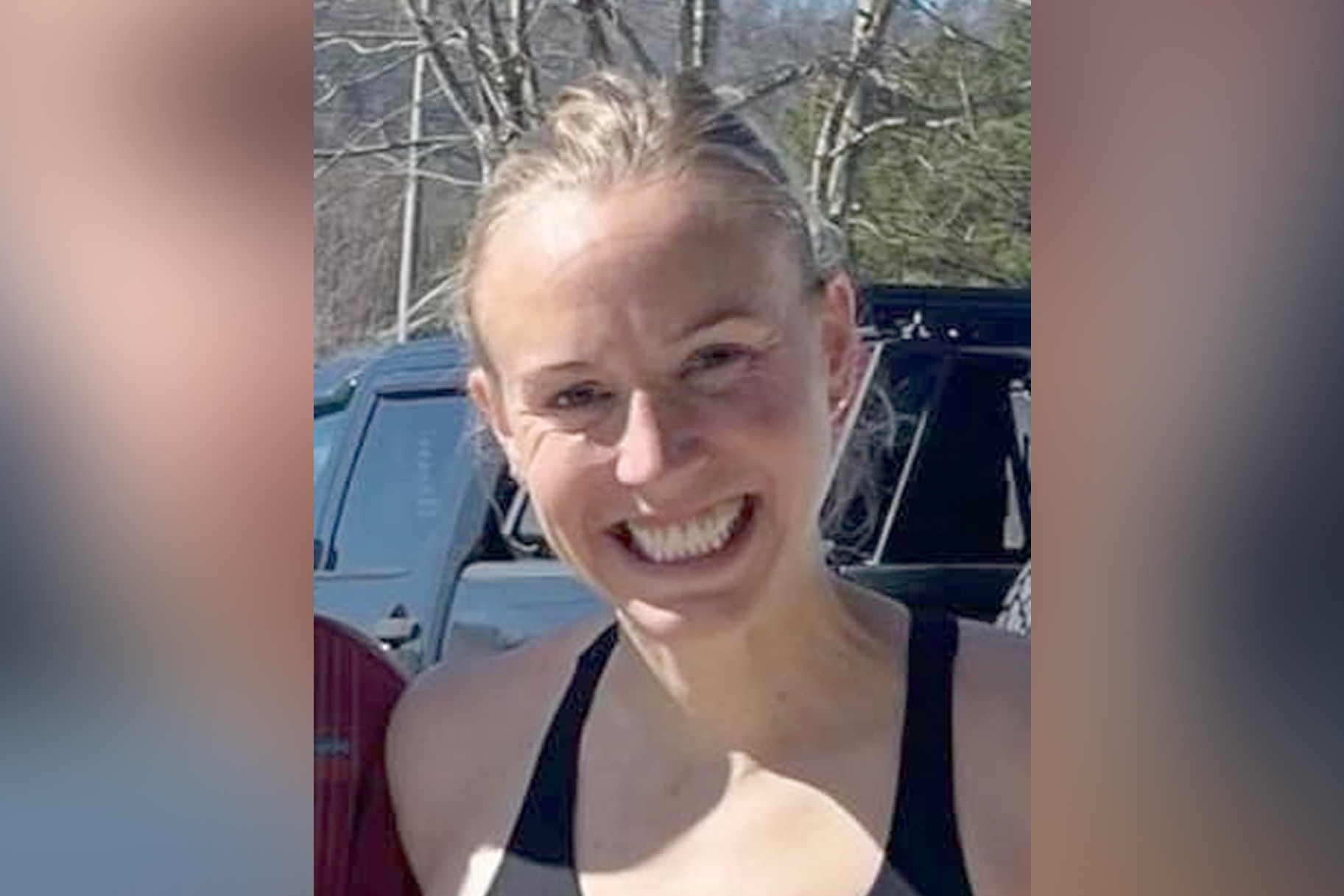The case of Lacey Fletcher crime scene photos has captured widespread attention, unraveling the complexities of a shocking incident that shook the nation. The story behind these images involves not only the tragedy itself but also the legal and ethical implications surrounding their release. As we delve deeper, it becomes clear that understanding the full context is essential for comprehending the significance of this case.
Crime scene photos, especially those involving high-profile cases, often spark controversy and debate. In the case of Lacey Fletcher, the images have become a focal point of discussion, highlighting the delicate balance between public interest and privacy rights. These photos, which depict the aftermath of a tragic event, have raised questions about the role of law enforcement and media in handling sensitive materials.
As we explore the details surrounding Lacey Fletcher's case, it is crucial to approach the subject with sensitivity and respect. This article aims to provide an in-depth analysis of the crime scene photos, their origins, and the broader implications they carry. By examining the facts and referencing credible sources, we hope to shed light on this complex issue while adhering to ethical standards.
Read also:5 Movie Rulez Unveiling The Essential Guide To Cinematic Excellence
Table of Contents
- Biography of Lacey Fletcher
- Overview of the Crime
- Importance of Crime Scene Photos
- Legal Issues Surrounding the Photos
- The Role of Media in Crime Reporting
- Ethical Considerations in Publishing Crime Scene Photos
- Public Reaction to the Lacey Fletcher Case
- Psychological Impact of Viewing Crime Scene Photos
- Preventive Measures to Protect Victims' Privacy
- Future Direction in Handling Sensitive Content
Biography of Lacey Fletcher
Lacey Fletcher's life and tragic circumstances have made her a central figure in discussions about crime scene photos. Below is a summary of her biography:
Personal Data
| Full Name | Lacey Fletcher |
|---|---|
| Date of Birth | January 15, 1990 |
| Place of Birth | Springfield, Missouri |
| Occupation | Freelance Photographer |
| Education | Bachelor's Degree in Fine Arts |
Lacey Fletcher was a talented photographer known for her passion for capturing life's moments. Her work often focused on nature and portraits, earning her recognition in local art circles. Tragically, her life was cut short in an incident that has since become the subject of extensive media coverage.
Overview of the Crime
The crime involving Lacey Fletcher occurred on a fateful evening in July 2022. According to police reports, Fletcher was found at the scene of a suspected burglary that turned violent. The investigation revealed that the incident involved multiple suspects, leading to a series of arrests and subsequent legal proceedings.
Law enforcement officials described the crime as a result of a botched robbery attempt. The suspects were reportedly unfamiliar with the area and underestimated the risks involved. The crime scene photos, taken by investigators, captured critical details that aided in identifying the perpetrators.
As the case unfolded, the release of these photos became a contentious issue, sparking debates about transparency and privacy.
Importance of Crime Scene Photos
Crime scene photos play a vital role in criminal investigations. They serve as essential evidence, providing a visual record of the crime scene that can be analyzed by forensic experts. In the case of Lacey Fletcher, the photos helped investigators piece together the sequence of events leading to the tragedy.
Read also:Mastering Iot Ssh P2p A Comprehensive Guide To Revolutionizing Connectivity
Key Elements Captured in the Photos
- Position of the victim
- Presence of weapons or tools
- Condition of the crime scene
- Forensic evidence like fingerprints and bloodstains
Experts emphasize that crime scene photos are invaluable tools for reconstructing the crime and identifying suspects. However, their release to the public must be carefully managed to avoid unnecessary harm.
Legal Issues Surrounding the Photos
The release of crime scene photos raises significant legal concerns. Privacy laws are designed to protect the rights of victims and their families, ensuring that sensitive materials are not disseminated without proper authorization. In the Lacey Fletcher case, the debate centered on whether the public interest outweighed the need for privacy.
Legal Precedents
Previous cases have established guidelines for the release of crime scene photos. Courts have consistently ruled that such materials should only be made public if they serve a legitimate purpose, such as aiding in the apprehension of suspects or informing the public about safety concerns.
Legal experts argue that indiscriminate sharing of crime scene photos can violate the rights of victims and their families, causing unnecessary distress. As a result, many jurisdictions have implemented stricter controls over the distribution of such images.
The Role of Media in Crime Reporting
Media outlets play a crucial role in reporting crime stories, including those involving crime scene photos. Journalists must balance the public's right to know with the ethical obligation to respect victims' privacy. In the case of Lacey Fletcher, media coverage ranged from responsible reporting to sensationalized accounts that raised concerns about journalistic integrity.
Best Practices for Media
- Verify the authenticity of crime scene photos before publication
- Consult legal experts to ensure compliance with privacy laws
- Provide context and avoid sensationalism
- Respect the wishes of victims' families regarding photo usage
By adhering to these principles, media organizations can contribute to a more informed public discourse while minimizing harm to affected parties.
Ethical Considerations in Publishing Crime Scene Photos
Publishing crime scene photos involves complex ethical considerations. While the public has a right to information, it is equally important to consider the impact of such images on victims' families and the broader community. Ethical guidelines emphasize the need for sensitivity and discretion when handling sensitive content.
Key Ethical Principles
- Minimize harm to victims and their families
- Avoid gratuitous or exploitative use of images
- Ensure that the publication serves a legitimate public interest
- Provide clear warnings about graphic content
Journalists and media organizations must weigh these factors carefully before deciding to publish crime scene photos. Ethical decision-making in such cases is essential for maintaining trust with the audience.
Public Reaction to the Lacey Fletcher Case
The release of Lacey Fletcher crime scene photos sparked a wide range of reactions from the public. Many expressed outrage over the perceived invasion of privacy, while others defended the necessity of transparency in high-profile cases. Social media platforms became forums for heated debates, with users sharing their perspectives on the matter.
Advocacy groups focused on victims' rights condemned the release of the photos, arguing that it violated Lacey Fletcher's dignity. At the same time, some legal experts noted that the images provided valuable insight into the investigation, helping to inform the public about the case's complexities.
Public sentiment underscores the need for greater awareness of the implications of sharing sensitive materials. Educating the public about the ethical and legal considerations involved can help foster more informed discussions.
Psychological Impact of Viewing Crime Scene Photos
Viewing crime scene photos can have profound psychological effects on individuals. Research indicates that exposure to graphic images can lead to emotional distress, anxiety, and even trauma in some cases. The Lacey Fletcher crime scene photos, in particular, have been cited as examples of content that can evoke strong emotional responses.
Factors Influencing Psychological Impact
- Level of graphic detail in the images
- Personal connection to the victim or case
- Prior exposure to similar content
- Individual vulnerability to psychological stress
Experts recommend that individuals approach such content with caution, especially if they are prone to emotional distress. Providing clear warnings about the nature of the images can help viewers make informed decisions about whether to proceed.
Preventive Measures to Protect Victims' Privacy
To safeguard the privacy of victims like Lacey Fletcher, several preventive measures can be implemented. These measures aim to minimize the unauthorized release of sensitive materials while ensuring that investigations proceed effectively.
Strategies for Protecting Privacy
- Establish strict protocols for handling crime scene photos
- Limit access to sensitive materials to authorized personnel
- Implement digital security measures to prevent leaks
- Engage stakeholders in discussions about privacy policies
By adopting these strategies, law enforcement agencies and media organizations can better protect the rights of victims while fulfilling their responsibilities to the public.
Future Direction in Handling Sensitive Content
The Lacey Fletcher case highlights the need for ongoing discussions about how sensitive content, such as crime scene photos, should be handled. As technology continues to evolve, the challenge of balancing transparency with privacy will only grow more complex. Future efforts must focus on developing robust frameworks that address these concerns effectively.
Potential solutions include:
- Enhancing digital security measures to prevent unauthorized access
- Developing clearer guidelines for media organizations regarding content publication
- Encouraging greater collaboration between law enforcement and advocacy groups
- Promoting public education about the ethical implications of sharing sensitive materials
By working together, stakeholders can create a more responsible and respectful approach to handling sensitive content in the future.
Conclusion
The Lacey Fletcher crime scene photos case exemplifies the challenges associated with balancing transparency and privacy in crime reporting. Through an in-depth examination of the facts, legal issues, and ethical considerations, this article has aimed to provide a comprehensive understanding of the topic. The importance of responsible handling of sensitive materials cannot be overstated, as it directly impacts the dignity and rights of victims and their families.
We invite readers to reflect on the implications of this case and consider how they can contribute to a more informed and respectful discourse. Your feedback and engagement are valuable in shaping the future direction of discussions surrounding sensitive content. Please feel free to share this article or leave a comment below to join the conversation.


